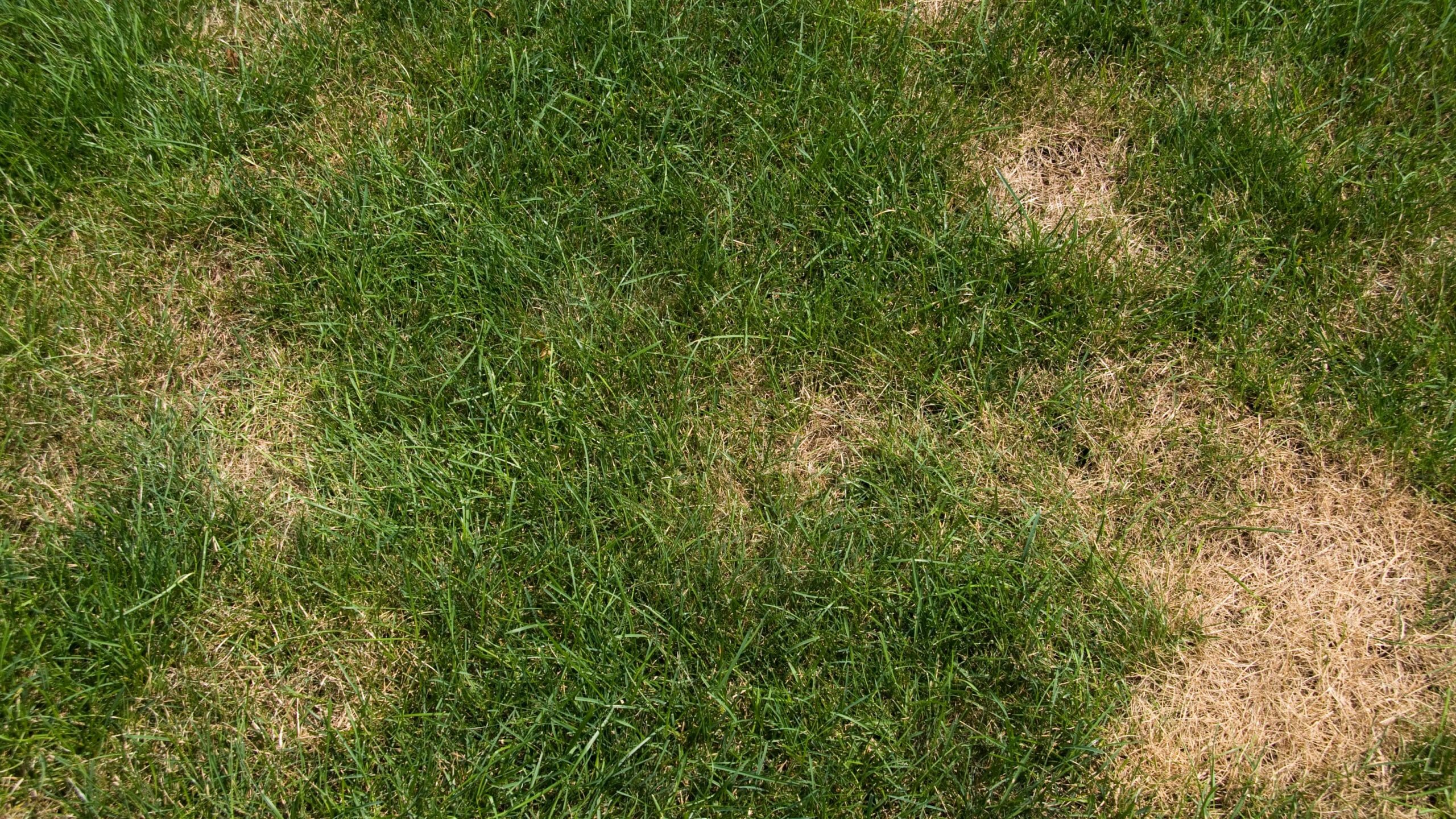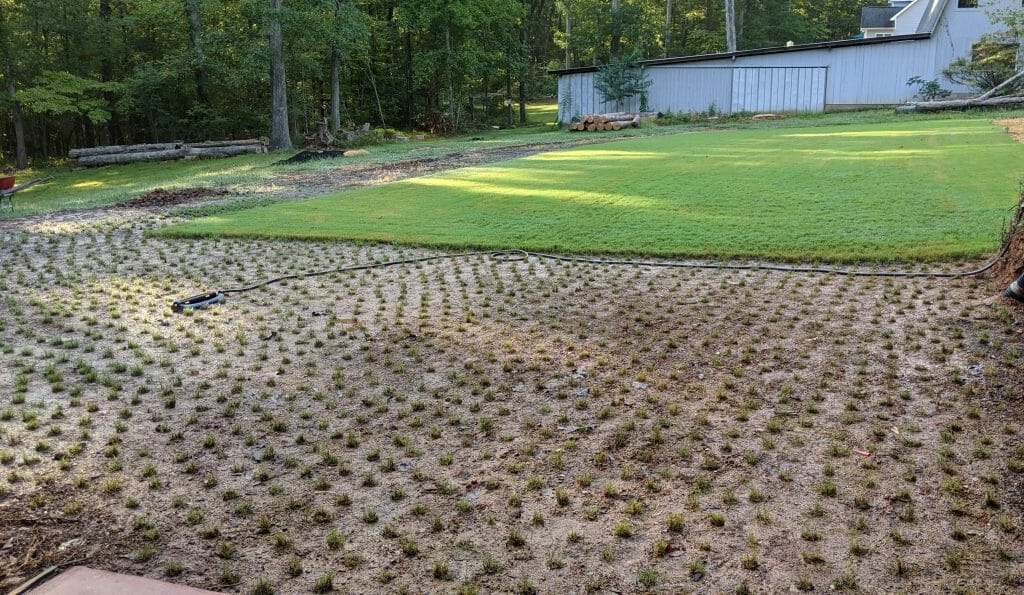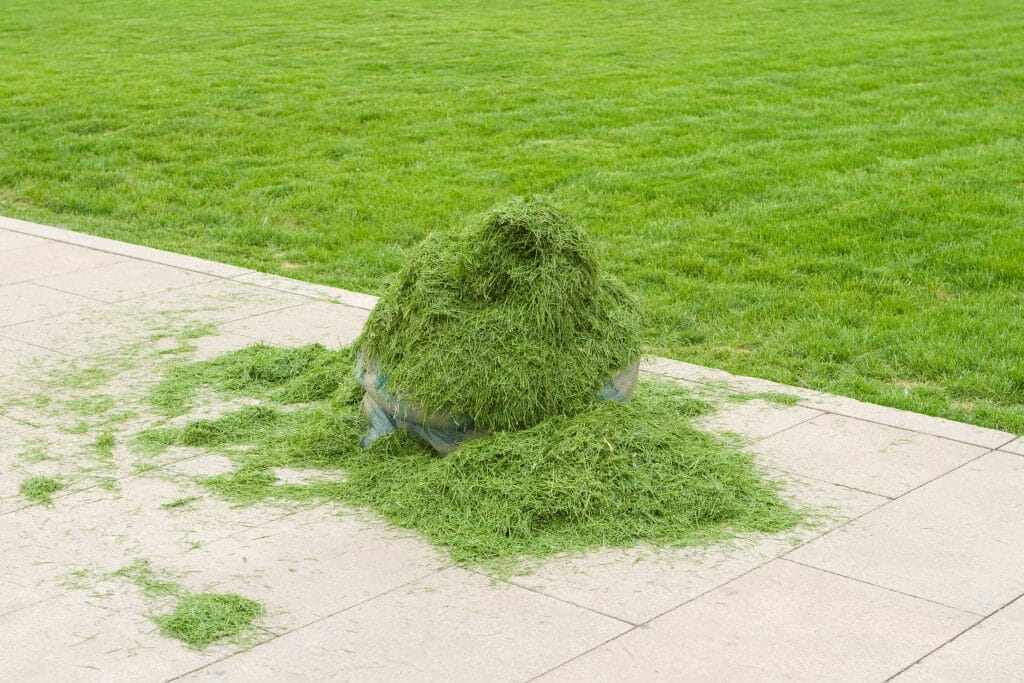
Whether you should water your lawn after applying fungicide depends on the type of fungicide you are using. When using systemic fungicide you should water your lawn after but never water your lawn when using contact fungicide.
You would think that maintaining a lawn is one of the easier landscaping tasks but there is more to it than you might think. Just like with other plants and trees they are subject to diseases and need occasional care.
One of the more common afflictions of grass is a fungal infection. Logically, the solution is applying fungicide.
However, it is not that simple. Different fungicides work in different ways and you need to know how to apply each fungicide effectively.
Read on to learn the best way to apply fungicide to your lawn and when to water your lawn when using fungicide.
When to Use Fungicide on Your Lawn
Apply fungicide on your lawn when it has a fungal infection. Learn to recognize the signs of lawn fungus so you can stop it from spreading.
There are many different kinds of grass fungus so it may be difficult to identify which specific fungus it is. Here are a few telltale signs that your lawn has fungus:
- Discoloration or rough edges on grass blades
- Spots on the blades or stems (orange, red, purple, gray, black)
- Darker slimy patches of grass
- Growing patches of yellow, brown or white
The best option is consulting a professional if you see one of these signs. They can tell what type of fungus it is specifically so that you can find the appropriate type of fungicide.
It is also important to identify when it is in fact a fungal infection and not a bacterial infection or other grass disease. Also, think about if any physical factors may have been the cause of the problem. That is why having a professional check it out is your best bet.
Types of Fungicide and Whether to Water Your Lawn
There are two main types of fungicide: systemic fungicide and contact fungicide. These work differently so how to best apply them on your lawn also differs.
Systemic Fungicide
Systemic fungicide is absorbed by the roots of the grass so that the chemicals move internally inside the plant. It suppresses the existing infection and allows for healthy new growth. It depends on the type of fungicide whether the chemicals also spread to new growth.
With systemic fungicide, rain is less of an issue because the rain may actually help the chemicals spread. This also means that you don’t have to reapply after it has rained.
However, heavy rainfall is not good because the chemicals may wash away before absorption. The best time to apply systemic fungicide is after a good rain.
Contact Fungicide
Contact fungicide is not absorbed by the grass roots. In this case the chemicals stay on the surface they are sticking to, creating a protective layer.
This type of fungicide may be used as a preventative measure as it forms a barrier. Unfortunately, this is also why it may be less effective in curing the fungal infection.
Make sure that you apply contact fungicide after rainfall and long before the next rain shower. Contact fungicide needs enough time to have dried before the grass gets wet again.
Tips for Applying Fungicide on Your Lawn
Always follow the instructions on the product label for it to be most effective. However, there are a few common mistakes people might make despite following these instructions.
Here are a few expert tips on applying lawn fungicide.
- Spray fungicides during a slight breeze to help spread the chemicals naturally.
- Apply the highest recommended rate if you are suspecting rain. Some of the fungicide will still wash away but more of it will remain, too.
- Make careful calculations to get the right distribution over your lawn. Take into account the water pressure and nozzle type.
- Alternate between types of fungicides. Fungus can build a resistance if a fungicide is used to often, making the chemicals less effective.
- Note when your grass type is most susceptible to specific fungus outbreaks. Apply fungicide preventatively instead of curatively whenever possible.
Here’s an awesome video from How To With Doc on identifying, and dealing with lawn fungus.
Frequently Asked Questions:
How Long Does Fungicide Take to Work?
How long fungicide takes to work depends on the severity of the infection and the effectiveness of the fungicide.
Most systemic fungicides need at least 7 days to take effect but then can remain effective for over 25 days. Contact fungicides work immediately but are only effective for 3 – 8 days or until the protective layer washes off.
How Long Does Fungicide Need to Be On Before Rain?
Ideally, there are 24 hours between when a contact fungicide is applied and the next rain shower. Anything less than 24 hours makes the fungicide less effective and anything more makes it more effective.
A light rain shower is less of a problem for systemic fungicides but heavy rain showers may wash away the chemicals before it is absorbed by the roots.
Does Watering at Night Cause Fungus?
The cooler temperatures and lack of sun at night lets water stick on grass blades for longer. If grass stays too wet for too long it can start to rot which leads to fungus.
The best time to water grass is in the early morning. At this time it is not so hot that the water evaporates too quickly but it won’t stay on the grass for too long either as the temperature rises.

Discovering your lawn has fungus is disappointing but with the right fungicide you can solve this problem. Make sure you correctly identify the type of fungus with the help of an expert and follow the application tips they give you.


